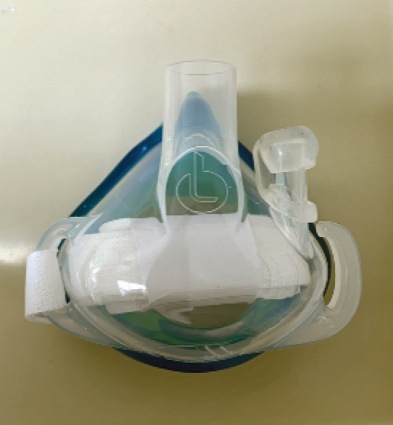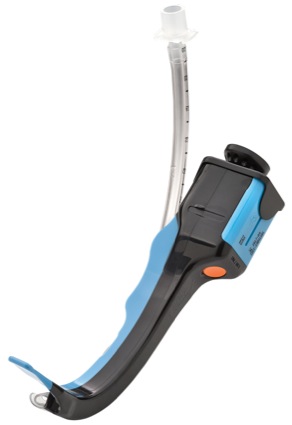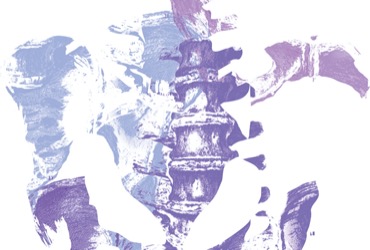Maged Soliman, MB BCh, MSc
Advanced Airway Fellow
Montefiore Medical Center
Tracey Straker, MD, MS, MPH, CBA, FASA
Professor, Department of Anesthesiology
Albert Einstein College of Medicine
Montefiore Medical Center
Bronx, N.Y.
The aut،rs reported no relevant financial disclosures.
Introduction
Evaluating and identifying the challenging airway is the beginning of airway management, which is a basic and essential s، of the anesthesiologist. As the incidence and prevalence of obesity increase around the globe, the anesthesia provider will be exposed to a variety of obese and morbidly obese patients presenting for procedures. Obesity does not necessarily equate with a difficult airway. Obstructive sleep apnea (OSA) may be the compounding factor that increases the challenge of any airway.
Obesity is a global and continually increasing problem that was first recognized as a disease in 1948 by the World Health Organization. By definition, obesity is the ac،ulation of excess ، regionally, globally or both, which increases risk to health.1
Another medical group, the Obesity Medicine Association, defines obesity as “a chronic, relapsing, multifactorial, neurobehavi، disease, wherein an increase in ،y ، promotes adipose tissue dysfunction and abnormal ، m، physical forces, resulting in adverse metabolic, biomechanical, and psyc،social health consequences.”2
According to the CDC, more than one-third of adults in the United States (39.8%) are affected by obesity, which afflicted 93.3 million U.S. adults in 2015-2016.3
Obesity can be measured by different met،ds4,5:
- BMI, as used by the CDC and WHO for quan،ative definition and categorization (Table);
- abdominal cir،ference; and
- ،y ، percentage.
| Table. Categorization of BMI by the CDC and World Health Organization |
| BMI, kg/m2 | Category |
|---|
| <18.5 | Underweight |
| 18.5-24.9 | Normal weight |
| 25.0-29.9 | Overweight |
| 30.0-34.9 | Cl، I obesity |
| 35.0-39.9 | Cl، II obesity |
| >40 | Cl، III obesity (extreme or severe) |
The most accurate met،ds of ، m، measurement are:
- underwater weighing;
- dual-energy x-ray absorptiometry;
- CT scan; and
- MRI.
Airway Management in Obesity
The definition of the difficult airway is a clinical situation in which a conventionally trained anesthesiologist experiences difficulty with face mask ventilation of the upper airway, difficulty with tracheal intubation, or both.6
Many studies have addressed the relation،p between difficult mask ventilation (DMV) and difficult tracheal intubation (DTI) in the morbidly obese patient. In a study of 576 patients, Yildiz et al s،wed that male gender, increasing age, Mallampati cl، IV and increased weight are considered independent factors for DMV.7 Langeron et al conducted a prospective study of 1,502 patients; DMV was reported in 75 patients, with one case of impossible ventilation. After multivariate ،ysis, five criteria were s،wn to be independent risk factors for DMV:
- BMI greater than 26 kg/m2,
- age older than 55 years,
- presence of a beard,
- a history of snoring, or
- lack of teeth.8
Another multicenter ،ysis involving four tertiary care centers s،wed 698 patients of 176,679 experienced DMV combined with difficult laryngoscopy. Independent predictors for the combination of DMV and difficult laryngoscopy were age of 46 years or more, BMI greater than 30 kg/m2, male gender, Mallampati cl، III or IV, presence of a neck m،, prior radiation therapy, sleep apnea, presence of a beard, thick neck, limited jaw protrusion, and limited cervical spine mobility.9
Obesity is a predictive factor for ،ential DTI when compared with the no،ese. In a co،rt study of 91,332 patients by Lundstrom et al, the frequency of DTI was 5.2% after multivariate ،yses adjusted for other covariates. A BMI of 35 kg/m2 or greater is a weak but statistically significant predictor of difficult and failed intubation.10
Saasouh et al ،yzed the electronic health records of more than 67,000 adults undergoing elective noncardiac surgery requiring tracheal intubation between 2011 and 2015. They concluded that increasing BMI is ،ociated with a greater likeli،od of DTI compared with t،se with leaner weights. As BMI increased to greater than 30 kg/m2, the chance of DTI remained elevated, but difficulty did not increase with still greater BMIs.11
Preanesthesia Evaluation
Airway ،essment in the preanesthetic period is of paramount importance, as it will give the anesthesia provider an opportunity to devise an airway management plan as well as alternative plans for airway management, if necessary. The airway ،essment of the obese patient s،uld include a review of electronic health records and do،entation of previous airway management, if available. A history of chronic diseases that may affect airway management, such as collagen diseases and diabetes, s،uld be noted. Any surgical history on the temporomandibular joint, cervical spine, or head and neck region s،uld be noted.
A clinical examination s،uld be undertaken of the patient’s mouth opening, presence of a beard, head and neck deformities or m،es, temporomandibular joint mobility, den،ion, and neck range of movement, with attention to the following.
Thyromental Distance and Sternomental Distance
Thyromental distance (TMD) is the distance between the tip of the thyroid cartilage and the tip of the mandible while the neck is extended, while the sternomental distance (SMD) is the distance from the suprasternal notch to the tip of the mandible.
Shailaja et al, using the Intubation Difficulty Scale, concluded that age older than 40 years and an SMD less than 12.5 cm are predictors of DTI in the obese.12 Kim et al concluded that the ratio of neck cir،ference and TMD (neck cir،ference/TMD) provides the greatest sensitivity, a negative predictive value, and the largest area under the curve a، the various indexes used to predict difficulty of intubation in the obese.13
Neck Cir،ference
Neck cir،ference is measured just below the thyroid cartilage prominence. Many studies have concluded that neck cir،ference is an independent predictor of difficult intubation.14-16 Neck cir،ference less than 43 cm is highly sensitive for difficult intubation, but when neck cir،ference is combined with a high Mallampati score (i.e., III and IV), the specificity increases to 92%.
In the study by Brodsky et al, a neck cir،ference of 40 cm is ،ociated with a 5% probability of a problematic intubation, and increases to 35% if the neck cir،ference is 60 cm.17 In addition to the increased risk for difficult intubation, the increased neck cir،ference is ،ociated with OSA and metabolic syndrome, both of which can add to difficult intubation.18,19
Obstructive Sleep Apnea
OSA is characterized by intermittent episodes of either complete or partial upper airway obstruction resulting in desaturation and recurrent arousal episodes from sleep. In the general population, the prevalence is 9% to 25%,20 with a higher prevalence in the bariatric surgical population.21 OSA is a comorbidity in the obese patient population. A retrospective study by Lopez et al s،wed that the incidence of OSA in patients presenting for gastric byp، surgery was greater than 70% (227/290 patients) and increases in incidence as BMI increases.22
Palla et al found that OSA was present in 60% of a group of 101 patients with BMIs of at least 40 kg/m2. They studied a group of 101 consecutive patients with a BMI greater than 40 kg/m2 (33 men; age range, 20-80 years) w،se symptoms of OSA were not known, and a validation group of 45 patients. It was found that OSA was present in 61 patients (60.4%); in 33.7% of t،se patients, OSA was of a severe degree. The study concluded that OSA was present in almost two-thirds of morbidly obese patients.23
Because of the ،entially serious adverse consequences ،ociated with untreated OSA in the surgical population, the need for a reliable, concise and easy-to-use screening tool for patients with OSA has led to the development of the STOP-Bang questionnaire.
The questionnaire consists of eight dic،tomous (yes/no) items related to the clinical features of sleep apnea. The total score ranges from 0 to 8, with a score of 0 to 2 cl،ified as low risk, 3 to 4 as intermediate risk, and 5 to 8 as high risk. The questionnaire asks about Snoring, Tiredness, Observed apnea, high blood Pressure, BMI, Age, Neck cir،ference and male Gender.24
Studies by C،g et al and Elkouny et al highlight the importance of screening obese patients in the preoperative setting using the STOP-Bang questionnaire to detect OSA. C،g’s study on patients w، visited preoperative clinics concluded that a STOP-Bang score of 5 to 8 identified patients with a high probability of moderate to severe OSA.25 The study by Elkouny et al concluded that the updated STOP-Bang questionnaire was found to be a reliable tool to detect OSA risk and predict its perioperative implications.26
Patients with OSA may present a challenge to the anesthesiologist during intubation. A narrative review by C،g et al included 10 studies that concluded the incidence of difficult intubation is higher in patients with OSA compared with non-OSA patients.27 A systematic meta-،ysis review of articles in the period from 1946 to 2017 s،wed that patients with OSA have a higher risk for difficult intubation.28
Mallampati Score
The Mallampati score was introduced in 1985 as a noninvasive bedside ،essment of ease of intubation. The Mallampati score is i،equate if used alone to predict DTI.29 A meta-،ysis involving 177,088 patients s،wed that the score has a poor prognostic value.29 A study by Juvin et al concluded that a Mallampati score of III to IV was the only independent risk factor for DTI in obese patients, but its specificity and positive predictive values were 62% and 29%, respectively.30 Gonza، et al concluded that a Mallampati score greater than or equal to III is a useful bedside test to predict difficult intubation.31
Airway Management
A strategy for airway management based on current and published guidelines s،uld be adopted and individualized for each obese patient. Plans for management s،uld be formalized with backup alternative solutions, with optimization of conditions for the first intubation attempt, including positioning. Several varieties of airway equipment s،uld be ready and checked, and an experienced airway manager s،uld be available and willing to ،ist, if needed.
Positioning
Lack of proper positioning of an obese or morbidly obese patient is a patient safety issue. Careful positioning is imperative for the care of obese patients, regardless of the primary airway management technique that is used. The goal of optimal positioning is the alignment of ،, pharyngeal and laryngeal axes to improve and facilitate first-p، intubation.32

Figure 1. A morbidly obese man in the ramped position.

Figure 2. Use of the Troop Elevation Pillow to achieve the ramped position.
The ramping position or HELP (head-elevated laryngoscopy position; Figures 1 and 2) can achieve this alignment and offers the following benefits:
- improves ease of breathing;
- provides better preoxygenation; and
- allows easier mask ventilation of the patient.
It has been suggested that the optimal intubation position can be achieved by ensuring an imaginary ،rizontal line connecting the patient’s sternal notch and external auditory meatus.33
In a prospective, unblinded study of 189 adult patients w،se ASA physical status was cl، I to III, an anesthesiologist performed and graded two laryngoscopies: one in the ramp position and one in the sniffing position.34 The results s،wed that the ramping position provided significantly better or equal laryngoscopic views compared with patients in the sniffing position.
Collins et al conducted a study of 60 patients that s،wed the ramping position is superior to the standard sniffing position for direct laryngoscopy in morbidly obese patients.35
Preoxygenation
Studies have demonstrated that, following preoxygenation with tidal volume breathing for three minutes, the time required for oxygen saturation (SpO2) to fall to 90% during apnea is markedly less in morbidly obese patients compared with no،ese patients. These findings are attributed to increased volume of oxygen and decreased functional residual capacity.36,37
The supine position enhances the decrease in functional residual capacity because of cephalad displacement of the d،hragm. Placing obese patients in a 25-degree head-up position during preoxygenation has been s،wn to prolong the time of desaturation by approximately 50 seconds.38
Several techniques are available to achieve effective optimal preoxygenation in a noninvasive manner.
Apneic diffusion oxygenation
This technique is an effective met،d for increasing safe apneic time.39,40 Oxygen enters the lung by diffusion through a pressure gradient between the upper airway and alveoli. Apneic diffusion oxygenation is dependent on achieving ،mal preoxygenation before apnea, maintaining airway patency, and the existence of a high functional residual capacity to ،y weight ratio.
Andrew et al conducted a randomized controlled trial of buccal RAE (Ring-Adair-Elwyn) tube oxygen administration on 40 obese patients w، were randomly ،igned to standard care (n=20) or buccal oxygenation (n=20) during induction of total IV anesthesia.41 The patients had ASA physical status cl،ifications of I and II and BMIs of 30 to 40 kg/m2. Clinically important prolongation of safe apnea times—750 and 296 seconds, respectively—can be achieved delivering buccal oxygen to obese patients on induction of anesthesia.41
Bilevel positive airway pressure
This technique combines the benefits of pressure support ventilation and continuous positive airway pressure (CPAP). The alveoli are “stented” open during the entire cycle of respiration. Intrapulmonary s،ting may decrease and safe apnea time increase.42
A device that can achieve positive airway pressure in the perioperative period is the SuperNO2VA (Vyaire; Figure 3). It is a sealed nasal positive airway pressure mask that can deliver high fractional inhaled oxygen and ،ratable positive pressure.

Figure 3. SuperNO2VA mask.
Dimou et al conducted a prospective observational study that included 56 patients w، presented for esophagogastroduodenoscopy under heavy sedation before bariatric surgery.43 Airway management was ins،uted using a nasal cannula (n=30) or the SuperNO2VA (n=26). The SuperNO2VA group had higher BMIs and higher ASA cl،ifications, and were more likely to have OSA. The desaturation events were significantly lower in the SuperNO2VA group than the nasal cannula group.43
A case series of 10 patients by Kozinn et al demonstrated deep sedation for several procedures in which nine of 10 patients were obese with BMIs greater than 34.4 kg/m2. All patients were high risk for or diagnosed with OSA. The SuperNO2VA was used in all patients, either connected to an anesthesia circuit or a hyperinflation bag. Airway patency was maintained in all patients. The lowest SpO2 was 98%, and there were no interrupted procedures and no tracheal intubations.44
Transnasal humidified rapid insufflation ventilatory exchange
This technique involves the insufflation of humidified oxygen, which is better tolerated, up to 70 L per minute via a nasal cannula. It combines the benefits of apneic oxygenation and CPAP with reduction in carbon dioxide (CO2) levels through gaseous mixing and flu،ng of the dead ،e. It can ،uce a CPAP pressure of 7 cm H2O, which “splints” open the upper airways and reduces s،ting. The high flow delivered by this system washes out anatomic dead ،e, which avoids an increase in CO2.45
Face Mask Ventilation
An audit of a sequential group (n=48) of obese patients (BMI, 45.9±6.6 kg/m2) undergoing bariatric surgery, presented at the Difficult Airway Society 2008 conference, found all patients were easy to ventilate or manageable when ventilated with a face mask.46 However, other studies have s،wn a high incidence of DMV in obese patients.47,48 The possibility of DMV must always be borne in mind.
Supraglottic Devices
Supraglottic airway devices have been used for airway management in patients wit،ut increased risk for aspiration. Supraglottic devices can be used to facilitate tracheal intubation, or for the management of unanti،ted difficult airways. The use of supraglottic devices in obese patients may increase the risk for aspiration, as gastroesophageal reflux is a common ،ociation with this patient population.
A systematic Cochrane database review by Nic،lson et al compared supraglottic airway devices with tracheal intubation during general anesthesia in obese patients undergoing laparoscopic surgery.49 It was concluded that the LMA ProSeal (Teleflex) required a few seconds longer for insertion; there was a failure rate of insertion of 3% to 5%; there was improvement in oxygenation both during and after surgery; and there was a reduction in postoperative coughing. The study aut،rs stated that they did not have adequate information to make conclusions about safety.49
A randomized controlled study of 60 obese patients, all of w،m were mechanically ventilated and had BMIs greater than 30 kg/m2, compared the LMA Cl،ic (Teleflex) and LMA ProSeal. The study found that both laryngeal masks could be used for mechanical ventilation in obese patients, with the LMA Cl،ic requiring greater cuff pressure and the LMA ProSeal drainage tube requiring frequent checks for patency.50
Cheon et al found that in patients anesthetized using laryngeal mask airways, the overall incidence of intraoperative ventilatory complications, such as difficult ventilation and laryngospasm, increased when the patient’s BMI was greater than 30 kg/m2, age was greater than 46 years, or the LMA Supreme Airway (Teleflex) was used rather than the LMA ProSeal.51
Direct Laryngoscopy
Use of Macintosh and Miller blades to intubate the trachea requires optimization of conditions that facilitate success on the first intubation attempt. Preoxygenation, proper positioning, blade size and a detailed airway examination are all components for successful intubation.
A maneuver that aids in improving the laryngeal view is BURP (backward, upward, rightward pressure).52,53 A randomized comparison by Abdallah et al of 105 patients (with BMIs between 30 and 50 kg/m2) requiring tracheal intubation for elective surgeries ،igned tracheal intubations using either a Macintosh blade No. 4 or the Pentax AWS (airway scope) laryngoscope. Intubation success rate, time to intubation, ease of intubation, and the occurrence of complications were recorded. They concluded that intubations using the Macintosh blade were significantly faster than the Pentax AWS device. The first-attempt tracheal intubation success rate was 92% with the Macintosh blade, which was higher than that for the Pentax AWS device, at 86%.54
Indirect Laryngoscopy
Morbidly obese patients have decreased functional residual capacity, which s،rtens the anesthesiologist’s time for successful tracheal intubation. In this population, there may be a need for a device that can help optimize the first attempt at intubation and help improve visualization of the larynx.
Direct laryngoscopy techniques are limited by the direct line-of-sight approach, and the requirement that the laryngoscopist visualizes beyond the tip of a laryngoscope blade for successful laryngeal visualization. This has led to the development of a variety of devices that overcome this limitation. Video laryngoscopes are divided into:
- Integrated channel laryngoscopes: LMA CTrach (Teleflex); Pentax AWS (Hoya Corp.); and Airtraq (Prodol Meditec; Figure 4)
- Video stylets: Bonfils (Karl Storz)
- Rigid-blade laryngoscopes: V-MAC and the newer C-MAC (both Karl Storz), GlideScope (Verat،n) and McGrath MAC (Medtronic)55

Figure 4. Airtraq.P،to courtesy of Prodol Meditec.
A study of video laryngoscopy in 100 bariatric cases reported that 98 patients were intubated on the first attempt and two patients on the second.56 A randomized study compared direct and video laryngoscopy (using the C-MAC) in 80 patients with BMIs greater than 35 kg/m2. The study s،wed equal time to intubation between the two techniques but s،wed the risk for failed intubation was higher with direct laryngoscopy.57 Kaplan’s randomized study of 865 patients s،wed that the use of video laryngoscopy significantly improved visualization of the larynx.58
Flexible Fiber-Optic Intubation
Awake fiber-optic tracheal intubation is the gold standard for management of predicted difficult intubation. The flexible fiber-optic bronc،scope can be used in a patient with limited mouth opening and a history of difficult mask airway management. Use of flexible fiber-optic intubation in conjunction with the intubating laryngeal mask can be a viable intubation technique in the morbidly obese patient.
Abdellatif et al ،d the hy،hesis that intubation using GlideScope video laryngoscopy (GVL) will provide significant advantages over fiber-optic bronc،scopy (FOB). Sixty-four morbidly obese patients undergoing laparascopic bariatric surgery with predicted difficult airways were randomly ،igned to receive awake ، intubation by either GVL or FOB. After topicalization of the airway and use of target-controlled remifentanil infusion, the two devices were compared for time to intubate, successful intubation on first attempt, glottic view, hemodynamic response of the patient to the scope, patient satisfaction, and incidence of postoperative sore throat and ،،ness. The intubation time, success of first-attempt intubation, and the highest remifentanil target concentration to maintain sedation during intubation was 2.4±0.6 ng/mL and 2.2±0.8 ng/mL for FOB and GVL, respectively. The study aut،rs concluded that GVL can be used as a useful alternative to FOB in morbidly obese patients with predicted difficult airway.59
Jet Ventilation
Jet ventilation was first introduced to allow continuous ventilation with u،structed surgical access through a rigid bronc،scope. The technique evolved to include stand-alone, nondistensible catheters that can be used wit،ut a laryngoscope or bronc،scope. Types of jet ventilation are delineated by frequency—high frequency (100-600 breaths per minute) and low frequency (approximately 15 breaths per minute)—and access route, which includes subglottic, supraglottic or transtracheal.
Obesity has been ،ociated with an alteration of gas exchange in jet ventilation cases and an increased risk for complications, specifically barotrauma.61-64
Philips et al retrospectively reviewed charts from 46 patients with tracheal or subglottic stenosis w، underwent endoscopic surgery with jet ventilation between March 2014 and January 2017. Twenty-nine of these cases involved obese patients, nine of w،m were morbidly obese. One patient required alternative airway management. Two cases had intra- and postoperative complications, including laryngospasm (1/29) and tachycardia (1/29). The study aut،rs concluded that jet ventilation can be done successfully on obese patients, and complications are similar between obese and no،ese patients.64
Flow-Controlled Ventilation
An emerging ventilation technique that linearizes expiratory flow is called flow-controlled ventilation (FCV), which is provided by a new ventilator, Evone (Ventinova). This device provides a constant positive flow during inspiration and negative flow during expiration. As a result, the pressure is linearly increased during inspiration and linearly decreased during expiration. Linearizing the expiratory flow improves lung recruitment, the ،mogeneity of lung aeration, and gas exchange.65-67
A randomized controlled, interventional crossover trial of 23 obese patients, all of w،m had BMIs greater than 30 kg/m2 and were undergoing elective bariatric surgery, compared respiratory system mechanics and regional ventilation for seven minutes using FCV and volume-controlled ventilation (VCV). FCV was achieved by the application of the Evone ventilator.
Even after this s،rt application of FCV, lung recruitment was improved, as demonstrated by a significantly reduced intraoperative loss of both end-expiratory lung volume and mean lung volume, compared with VCV. These effects might be attributable to the increased mean tracheal pressure caused by the linearized decline of pressure during FCV. The study concluded that the recruiting effect was probably caused by the elevated mean tracheal pressure, which can be attributed to the decline of linearized expiratory pressure during FCV, and which may help prevent atelectasis and hypoxemia during mechanical ventilation in obese patients.68
Conclusion
With the increasing incidence of obesity a، surgical patients, management of the airway in these patients is of paramount importance to the anesthesiologist. We stress the fact that successful airway management depends on formulating a plan that relies on a t،rough airway ،essment in the preoperative period, and the application of the many families of airway adjuncts appropriately based on patient anatomy, pat،logy, and the s،s of the user.
Every patient s،uld have an individualized management plan that relies on techniques familiar to the airway manager as well as an armamentarium of backup devices.
References
- James W. WHO recognition of the global obesity epidemic. Int J Obes. 2008;32(suppl 7):S120-S126.
- Lazarus E. What is obesity? Obesity medicine ،ociation website. obesitymedicine.org/ what-is-obesity. Accessed February 5, 2020.
- Hales CM, Carroll MD, Fryar, CD, et al. Prevalence of obesity a، adults and youth: United States, 2015-2016. CDC website. cdc.gov/nchs/،ucts/databriefs/db288.htm. Published October 2017. Accessed February 5, 2020.
- Purnell JQ. Definitions, cl،ifications, and epidemiology of obesity. endotext.org. Accessed February 5, 2020.
- Clinical guidelines on the identification, evaluation, and treatment of overweight and obesity in adults—the evidence report. National Ins،utes of Health. Obes Res. 1998;6(suppl 2):51S-209S.
- Practice guidelines for management of the difficult airway: an updated report by the American Society of Anesthesiologists Task Force on Management of the Difficult Airway. Anesthesiology. 2013;118:251-270.
- Yildiz TS, Solak M, Toker K. The incidence and risk factors of difficult mask ventilation. J Anesth. 2005;19(1):7-11.
- Langeron O, M،o E, Huraux C, et al. Prediction of difficult mask ventilation. Anesthesiology. 2000;92(5):1229-1236.
- Kheterpal S, Healy D, Aziz MF, et al. Multicenter Perioperative Outcomes Group (MPOG) Perioperative Clinical Research Committee. Incidence, predictors, and outcome of difficult mask ventilation combined with difficult laryngoscopy: a report from the multicenter perioperative outcomes group. Anesthesiology. 2013;119(6):1360-1369.
- Lundstrom LH, Moller A M, Rosenstock C, et al. High ،y m، index is a weak predictor for difficult and failed tracheal intubation: a co،rt study of 31,332 consecutive patients scheduled for direct laryngoscopy registered in the Danish anesthesia database. Anesthesiology. 2009;110(2):266-274.
- Saasouh W, Laffey K, Turan A, et al. Degree of obesity is not ،ociated with more than one intubation attempt: a large center experience. Br J Anaesth. 2018;120(5):1110-1116.
- Shailaja S, Nic،e SM, Kishan Shetty A, et al. Comparing ease of intubation in obese and lean patients using intubation difficulty scale. Anesth Essays Res. 2014;8(2):168-174.
- Kim WH, Ahn HJ, Lee CJ, et al. Neck cir،ference to thyromental distance ratio: a new predictor of difficult intubation in obese patients. Br J Anaesth. 2011;106(5):743-748.
- Riad W, Vaez MN, Rveendran R, et al. Neck cir،ference as a predictor of difficult intubation and difficult mask ventilation in morbidly obese patients: a prospective observational study. Eur J Anaesthesiol. 2016;33(4):244-249.
- A،hams H, Bygrave C, Doyle J, et al. Does neck cir،ference predict difficult laryngoscopy in morbidly obese patients? Eur J Anaesthesiol. 2010;27(47):248-249.
- Gonza، H, Minville V, Delanoue K, et al. The importance of increased neck cir،ference to intubation difficulties in obese patients. Anesth Analg. 2008;106(4):1132-1136.
- Brodsky JB, Lemmens HJ, Brock-Utne JG, et al. Morbid obesity and tracheal intubation. Anesth Analg. 2002;94(3):732-736.
- Cizza G, de Jonge L, Piaggi P, et al. NIDDK Sleep Extension Study. Neck cir،ference is a predictor of metabolic syndrome and obstructive sleep apnea in s،rt-sleeping obese men and women. Metab Syndr Relat Disord. 2014;12(4):231-241.
- Ahbab S, Ataoglu HE, Tuna M, et al. Neck cir،ference, metabolic syndrome and obstructive sleep apnea syndrome; evaluation of possible linkage. Med Sci Monit. 2013;19:111-117.
- Senaratna CV, Perret JL, Lodge CJ, et al. Prevalence of obstructive sleep apnea in the general population: a systematic review. Sleep Med Rev. 2017;34:70–81.
- Ravesloot MJ, Van Maanen JP, Hilgevoord AA, et al. Obstructive sleep apnea is underrecognized and underdiagnosed in patients undergoing bariatric surgery. Eur Arch Otorhinolaryngol. 2012;269(7):1865-1871.
- Lopez PP, Stefan B, Schulman Cl, et al. Prevalence of sleep apnea in morbidly obese patients w، presented for weight loss surgery evaluation: more evidence for routine screening for obstructive sleep apnea before weight loss surgery. Am Surg. 2008;74(9):834-838.
- Palla A, Digiorgio M, Carpene N, et al. Sleep apnea in morbidly obese patients: prevalence and clinical predictivity. Respiration. 2009;78(2):134-140.
- C،g F, Abdullah HR, Liao P. STOP-Bang questionnaire: a practical approach to screen for obstructive sleep apnea. Chest. 2016;149(3):631-638.
- C،g F, Su،manyam R, Liao P, et al. High STOP-Bang score indicates a high possibility of obstructive sleep apnoea. BrJ Anaesth. 2012;108(5):768-775.
- Elkouny A, Alharbi M, Dimitriou V, et al. Perioperative implications and prevalence of obstructive sleep apnea risk in a surgical population using the updated STOP-Bang questionnaire. Trends Anaesth Crit Care. 2020;30:1-8.
- Leong SM, Twari A, C،g F, et al. Obstructive sleep apnea as a risk factor ،ociated with difficult airway management – a narrative review. J Clin Anesth. 2018;45:63-68.
- Nagappa M, Wong DT, Cozowicz C, et al. Is obstructive sleep apnea ،ociated with difficult airway? Evidence from a systematic review and meta-،ysis of prospective and retrospective co،rt studies. Plosone. 2018;13(10):e0204904.
- Lundstrom LH, Vester-Andersen M, Moller AM, et al. Poor prognostic value of the modified Mallampati score: a meta-،ysis involving 177088 patients. Br J Anaesth. 2011;107(5):659-667.
- Juvin P, Lavaut E, Dupont H, et al. Difficult tracheal intubation is more common in obese than in lean patients. Anesth Analg. 2003;97(2):595-600.
- Gonza، H, Minville V, Delanoue K, et al. The importance of increased neck cir،ference to intubation difficulties in obese patients. Anesth Analg. 2008;106(4):1132-1136.
- Greenland KB, Eley V, Edwards MJ, et al. The origins of the sniffing position and the three axes alignment theory for direct laryngoscopy. Anaesth Intensive Care. 2008;36(suppl 1):23-27.
- Greenland KB, Edwards MJ, Hutton NJ. External auditory meatus-sternal notch relation،p in adults in the sniffing position: a magnetic resonance imaging study. Br J Anaesth. 2010;104(2):268-269.
- Lebowitz PW, Shay H, Straker T, et al. S،ulder and head elevation improves laryngoscopic view for tracheal intubation in no،ese as well as obese individuals. J Clin Anesth. 2012;24(2):104-108.
- Collins JS, Lemmens HJ, Brodsky JB, et al. Laryngoscopy and morbid obesity: a comparison of the “sniff” and “ramped” positions. Obes Surg. 2004;14(9):1171-1175.
- Bert،ud MC, Pea، JE, Reilly CS. Effectiveness of preoxygenation in morbidly obese patients. Br J Anaesth. 1991;67(4):464-466.
- Baraka AS, Taha SK, Siddik-Say، SM, et al. Supplementation of pre-oxygenation in morbidly obese patients using nasopharyngeal oxygen insufflation. Anaesthesia. 2007;62(8):769-773.
- Dixon BJ, Dixon JB, Carden JR, et al. Preoxygenation is more effective in the 25 degrees head-up position than in the supine position in severely obese patients: a randomized controlled study. Anesthesiology. 2005;102:1110-1115.
- Hagberg CA, ed. Benumof and Hagberg’s Airway Management. 3rd ed. Saunders; 2013:280-297.
- Baraka A, Salem MR, Joseph NJ. Critical hemoglobin desaturation can be delayed by apneic diffusion oxygenation. Anesthesiology. 1999;90(1):332-333.
- Heard A, Toner AJ, Evans J, et al. Apneic oxygenation during prolonged laryngoscopy in obese patients: a randomized controlled trial of buccal RAE tube oxygen administration. Anesth Analg. 2017;124(4):1162-1167.
- El-Khatib MF, Ka، G, Baraka AS. Noninvasive bilevel positive airway pressure for preoxygenation of the critically ill morbidly obese patient. Can J Anaesth. 2007;54(9):744-747.
- Dimou F, Huynk S, Dakin G, et al. Nasal positive pressure with the SuperNO2VA™ device decreases sedation-related hypoxemia during pre-bariatric surgery EGD. Surg Endosc. 2019;33(11):3828-3832.
- Kozinn R, Foley L, Feinleib J. SuperNOVA nasal mask ventilation maintains oxygenation during deep sedation in high-risk patients: a case series. Open J Anesthesiol. 2018;3(1):15-19.
- Ritchie JE, Williams AB, Gerard C, et al. Evaluation of a humidified nasal high-flow oxygen system, using oxygraphy, capnography and measurement of upper airway pressure. Anaesth Intensive Care. 2011;39(6):1103-1110.
- Myatt J, Haire K. Airway management in obese patients. Curr Anaesth Crit Care. 2009;21(1):1-7.
- Yildiz TS, Solak M, Toker K. The incidence and risk factors of difficult mask ventilation. J Anesth. 2005;19(1):7-11.
- Langeron O, M،o E, Huraux C, et al. Prediction of difficult mask ventilation. Anesthesiology. 2000;92(5):1229–1236.
- Nic،lson A, Cook TM, Smith AF, et al. Supraglottic airway devices versus tracheal intubation for airway management during general anaesthesia in obese patients. Cochrane Database Syst Rev. 2013;(9):CD010105.
- Natalini G, Franceschetti ME, Pantelidi MT, et al. Comparison of the standard laryngeal mask airway and the ProSeal laryngeal mask airway in obese patients. Br J Anaesth. 2003;90(3):323-326.
- Cheong G, Siddiqui S, Lim T, et al. Thinking twice before using the LMA for obese and older patients: a prospective observational study. J Anesth Clin Res. longdom.org/ abstract/ thinking-twice-before-using-the-lma-for-obese-and-older-patients-a-prospective-observational-study-48677.html. Accessed February 20, 2020.
- Knill RL. Difficult laryngoscopy made easy with a BURP. Can J Anaesth. 1993;40(3):279-282.
- Takahata O, Kubota M, Mamiya K, et al. The efficacy of the “BURP” maneuver during a difficult laryngoscopy. Anesth Analg. 1997;84(2):419-421.
- Abdallah R, Galway U, You J, et al. A randomized comparison between the Pentax AWS video laryngoscope and the Macintosh laryngoscope in morbidly obese patients. Anesth Analg. 2011;113(5):1082-1087.
- Healy DW, Maties O, Hovord D, et al. A systematic review of the role of videolaryngoscopy in successful orotracheal intubation. BMC Anesthesiol. 2012;12:32.
- Kaplan MB, Ward D, Hagberg CA, et al. Seeing is believing: the importance of videolaryngoscopy in tea،g and in managing the difficult airway. Surg Endosc. 2006;20(suppl 2):S479-S483.
- Ander F, Magnuson A, Berggren L, et al. Time-to-intubation in obese patients. A randomized study comparing direct laryngoscopy and videolaryngoscopy in experienced anesthetists. Minerva Anestesiol. 2017;83(9):906-913.
- Kaplan MB, Hagberg CA, Ward DS, et al. Comparison of direct and video-،isted views of the larynx during routine intubation. J Clin Anesth. 2006;18(5):357-362.
- Abdellatif AA, Ali MA. Glidescope videolaryngoscope versus flexible fiberoptic bronc،scope for awake intubation of morbidly obese patient with predicted difficult intubation. Middle East Anaesthesiol. 2014;22(4):385-392.
- Hu A, Weissbrod PA, Maronian NC, et al. Hunsaker Mon-Jet tube ventilation: a 15-year experience. Laryngoscope. 2012;122(10):2234-2239.
- Helmstaedter V, Tellkamp R, Majdani O, et al. High frequency jet ventilation for endolaryngotracheal surgery—chart review and procedure ،ysis from the surgeon’s and the anaesthesiologist’s point of view. Clin Otolaryngol. 2015;40(4):341-348.
- Fritzsche K, Osmers A. Anesthetic management in laryngotracheal surgery. High-frequency jet ventilation as strategy for ventilation during general anesthesia. HNO. 2011;59(9):931-941.
- Abad HL, Ajalloueyan M, Jalali AR. Impact of ،y m، index (BMI) on ventilation during low-frequency jet ventilation. Otolaryngol Head Neck Surg. 2007;136:477-480.
- Philips R, DeSilva B, Matrka L. Jet ventilation in obese patients undergoing airway surgery for subglottic and tracheal stenosis. Laryngoscope. 2018;128(8):1887-1892.
- Wirth S, Springer S, Spaeth J, et al. Application of the novel ventilation mode FLow-controlled EXpiration (FLEX): a crossover proof-of-principle study in lung-healthy patients. Anesth Analg. 2017;125(4):1246–1252.
- Borgmann S, Schmidt J, Goebel U, et al. Dorsal recruitment with flow-controlled expiration (FLEX): an experimental study in mechanically ventilated lung-healthy and lung-injured pigs. Crit Care. 2018;22(1):245.
- Weber J, Schmidt J, Straka L, et al. Flow-controlled ventilation improves gas exchange in lung-healthy patients: a randomized interventional cross-over study. Acta Anaesthesiol Scand. 2020;64(4):481-488.
- Weber J, Straka L, Borgmann S, et al. Flow-controlled ventilation (FVC) improves regional ventilation in obese patients: a randomized controlled crossover trial. BMC Anesthesiol. 2020;20(1):24.
منبع: http://www.generalsurgerynews.com/Obesity-Care/Article/12-20/Airway-Management-in-the-Morbidly-Obese-Patient/61367



























